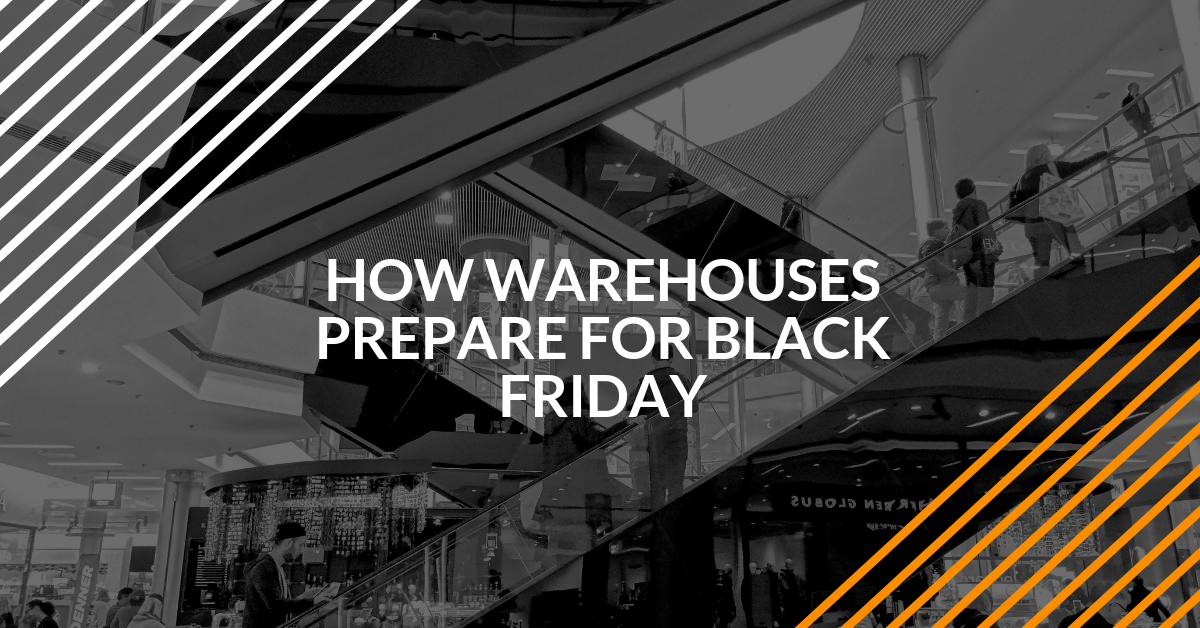How Warehouses Prepare for Black Friday

- Thanksgiving Day – $2.9 billion
- Black Friday – $5 billion
- Cyber Monday – $6.6 billion
They spent a combined total (online and in-store) of more than $700 billion during the months of November and December. How do retail companies handle this consumer shopping onslaught? By preparing their warehouses far in advance. Here’s how they do it:
- Stock Levels. Reviewing historical sales data helps ensure sufficient stock levels. Companies also need to put the best-selling items where they can be reached for fast shipping.
- Staffing Needs. Not surprisingly, it takes more employees to handle the increased workload. This requires scheduling well in advance and covering for workers who won’t be available during the holidays. Many companies hire seasonal help to avoid staffing shortages.
- Organizing the Warehouse. This is like spring cleaning, only in the fall. Companies take a count to determine what they have in inventory. They get rid of outdated inventory and organize what remains. Most importantly, they make sure every product is properly bar-coded and labeled.
- Testing the Technology. Today’s warehouse operations depend on barcodes, scanners, and Internet of Things (IoT) technology. Making sure all technology tools are in good working order helps companies meet the increased demands of Black Friday.
- Devising a Plan B. Even with all the preparation, Black Fridays are hectic. Managers need to make sure all employees know their responsibilities. They should also have a backup plan in case equipment breaks down or things go wrong.
- Increased attention to safety. When the workload increases around Black Friday, so does the need for safety awareness. This includes making sure only authorized personnel operate any forklifts in the warehouse. Obtaining forklift certification is quick, easy and affordable with online training.
Essential Black Friday Warehouse Skill Sets
Serving the hordes of Black Friday shoppers requires different skills within the warehouse. These include:
- Warehouses need to be able to adjust their work processes to meet customer demands. Employees should be empowered to make decisions in the moment. Requiring them to seek managerial approval can slow down the workflow.
- This involves the ability to ramp up staffing and inventory to keep up with increased order levels. Being able to quickly hire temporary workers and buy or lease more equipment is essential.
- Without today’s mobile technologies, Black Friday would be a nightmare for warehouses. Smartphones and tablets allow managers to access information anywhere in the warehouse at any time. They make it easier to track the movement of products from initial order to shipping. They also allow employees to quickly respond to bottlenecks that can slow down the workflow.
- The IT department sometimes assumes that all warehouse workers need the same technology tools. Not so! Employees in different roles often require very different tools. For example, forklift drivers need apps that guide them to the proper area to locate and move pallets of products.
- Preparing a warehouse for Black Friday is a complex task. Managers need the experience and expertise to successfully complete a variety of tasks. These include:
– Scheduling enough labor to meet the demands of anticipated work levels
– Implementing work processes to meet demanding delivery schedules
– Coordinating with shipping vendors for on-time pickup and delivery
– Scheduling work shifts to minimize overtime during peak hours
– Providing ongoing feedback to employees to improve performance
Learn Black Friday Warehouse Techniques from the Best
Few companies know more about how to handle Black Friday than Amazon.com. Here are three strategies they use with great success.
- Innovative warehouse stocking. Amazon warehouses take a counter-intuitive approach to stocking products. Most companies stock related items next to each other. Amazon places items anywhere they can find shelf space. Employees then use barcode scanners to transmit each item’s location to a central database. That way, products can be easily found for shipment.
- Extended Black Friday hours. Originally, Black Friday started the morning after Thanksgiving. These days, many big-box retailers are starting on Thanksgiving Day. Amazon takes it a step further by launching its holiday deal offerings as much as a week before Black Friday. This allows more time to process and deliver orders. Customers who shop early can have gifts waiting on their doorstep before Black Friday arrives.
- Tightening up on third-party sellers. Amazon allows third-party sellers to use its e-commerce platform. However, stocking those products greatly increases Amazon’s workload and inventory carrying costs. Amazon now raises third-party storage fees during November and December. As a result, sellers only send inventory they are confident will sell to Amazon warehouses. Amazon also allows sellers to send Prime-eligible products from their own warehouses. This reduces Amazon’s shipping volume and frees up warehouse shelf space. It also allows them to maximize their product offerings.
Why wait for Black Friday? Certify your forklift operators today!